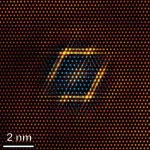(Press-News.org) A previously overlooked dopamine-producing brain circuit drives hedonic eating, or eating for pleasure, according to a new study in mice. The findings offer insights into how GLP-1 agonist drugs like semaglutide affect appetite suppression and why pleasing and delicious foods can override these drugs’ effects. In a related Perspective, Dana Small argues that the findings indicate that the inter-individual differences in the adaptation of this circuit in response to GLP-1 drugs may account for differences in treatment efficacy in humans. “Future work that aims to minimize such adaptation could offer a promising avenue for the development of adjunct therapies to broaden the group of individuals for whom GLP-1 agonist treatment is effective.” Hedonic eating is the drive to consume for the pleasurable experience of eating and the enjoyable taste of food, rather than for physiological energy needs. Related desires can lead to overeating and play a major role in obesity. Eating behaviors progress through three distinct phases – seeking, consummation, and satiety – each governed by complex neural circuits responsible for initiating, maintaining, and terminating feeding. The seeking phase is influenced by the body's homeostatic signals and learned environmental cues that predict food rewards. Satiety, on the other hand, is triggered by signals that suppress further consumption, a response mimicked by certain anti-obesity medications like GLP-1R agonists. However, the mechanisms that sustain the consummatory phase during hedonic eating are poorly understood.
Using cell-specific circuit mapping and photometry-calibrated optogenetics in the brains of mice, Zhenggang Zhu and colleagues identified a neural circuit between the peri-locus coeruleus and the ventral tegmental area (VTA) of the brain that controls palatable food intake. According to Zhu et al., VTA dopamine (VTADA) neurons play a central role in sustaining hedonic eating by promoting the continued consumption of palatable food. Artificially increasing VTADA neuron activity during consumption enhanced both food intake and eating duration; suppressing their activity reduced consumption without affecting the initiation of eating. Notably, Zhu et al. show that semaglutide, a GLP-1 agonist drug that engages satiety pathways, temporarily suppressed VTADA neuron activity and reduced food intake. However, after weight loss induced by semaglutide treatment, the tendency to overconsume palatable food returned. This effect was reversed by targeted inhibition of VTADA neurons. These findings suggest that VTADA neurons dynamically regulate hedonic eating during food consumption, counteracting the appetite-suppressing effects of semaglutide.
END
Dopamine-producing brain circuit drives eating “for pleasure” in mice
Summary author: Walter Beckwith
2025-03-27
ELSE PRESS RELEASES FROM THIS DATE:
Balancing national priorities and basic research in China
2025-03-27
As China rises as a global science power, its government has increased efforts to align basic research with national priorities, such as economic growth, environmental sustainability, and national security. In a Policy Forum, Andrew Kennedy discusses how this increasing emphasis on national priorities creates tension with basic research in China – a pattern that reflects broader global trends – and the potential risks of prioritizing near-term objectives over long-term scientific discovery. According to the author, neglecting curiosity-driven research while expanding support for near-term priorities is short-sighted. Without it, transformative innovations – from ...
Feeling the future: New wearable device mimics the complexity of human touch
2025-03-27
When it comes to haptic feedback, most technologies are limited to simple vibrations. But our skin is loaded with tiny sensors that detect pressure, vibration, stretching and more.
Now, Northwestern University engineers have unveiled a new technology that creates precise movements to mimic these complex sensations.
The study will be published on March 28 in the journal Science.
While sitting on the skin, the compact, lightweight, wireless device applies force in any direction to generate a variety of sensations, including ...
New discovery boosts wheat's fight against devastating disease
2025-03-27
A new study published in Science by a team of scientists across five continents led by King Abdullah University of Science and Technology (KAUST) Associate Professor Brande Wulff reports a previously unknown molecular event that initiates the immune response to a major wheat disease. The findings provide strategies to engineer wheat that has stronger immunity against infection.
As the main food staple for billions of people and one of the main sources of animal feed, wheat is one of the most important food commodities in the world. This importance is why a wheat pandemic can be even more devasting than a human pandemic.
"Climate change ...
Testing patients for just three genes could help prevent three quarters of avoidable side effects of certain medications
2025-03-27
UNDER STRICT EMBARGO UNTIL THURSDAY 27 MARCH 2025 AT 11 AM PACIFIC TIME / 2 PM EASTERN TIME .
Peer reviewed | Observational study | People
A new study from Queen Mary University of London found that 9% of all reported adverse drug reactions (ADRs) reported to the UK medicines regulator are associated with medications where side effect risk is partly dependent on patient’s genes. Of this subset of ADRs, 75% were associated with only three genes that impact how the body processes medication. Genetic testing before prescribing ...
A genetic tree as a movie: Moving beyond the still portrait of ancestry
2025-03-27
ANN ARBOR—University of Michigan researchers have developed a statistical method that can be used for such wide-ranging applications as tracing your ancestry, modeling disease spread and studying how animals spread through geographic regions.
One of the method's applications is to give a more complete sense of human ancestry, says Gideon Bradburd, U-M professor of ecology and evolutionary biology. For example, when you send your DNA off for a personalized ancestry report, the report you get back is only a very small view of your family tree pinned in a specific point ...
New material gives copper superalloy-like strength
2025-03-27
Researchers from the U.S. Army Research Laboratory (ARL) and Lehigh University have developed a groundbreaking nanostructured copper alloy that could redefine high-temperature materials for aerospace, defense and industrial applications.
Their findings, published in the journal Science, introduce a Cu-Ta-Li (Copper-Tantalum-Lithium) alloy with exceptional thermal stability and mechanical strength, making it one of the most resilient copper-based materials ever created.
“This is cutting-edge science, developing a new material ...
Park entrances may be hotspots for infective dog roundworm eggs
2025-03-27
In an analysis of soil samples from twelve parks in Dublin, Ireland, park entrances were more heavily contaminated with infective roundworm eggs than any other tested park location. Jason Keegan of Trinity College in Dublin, Ireland, and colleagues present these findings in the open-access journal PLOS Neglected Tropical Diseases.
Dogs and cats are often infected with parasitic roundworms in the Toxocara genus. Infected animals can release the roundworm eggs into the environment, and humans can become infected after accidental ingestion of the eggs. Many infected humans never experience symptoms, but some may experience mild or severe ...
Commercial fusion power plant closer to reality following research breakthrough
2025-03-27
Successfully harnessing the power of fusion energy could lead to cleaner and safer energy for all – and contribute substantially to combatting the climate crisis. Towards this goal, Type One Energy has published a comprehensive, self-consistent, and robust physics basis for a practical fusion pilot power plant.
This groundbreaking research is presented in a series of six peer-reviewed scientific papers in a special issue of the prestigious Journal of Plasma Physics (JPP), published by Cambridge University Press.
The articles serve as the foundation for the company’s first fusion power plant project, which Type One Energy is developing with the Tennessee ...
The Protein Society announces its 2024 Best Paper recipients
2025-03-27
FOR IMMEDIATE RELEASE
Contact:
John Kuriyan, Editor-in-Chief
Protein Science Journal
Raluca Cadar
The Protein Society
Phone: (844) 377-6834
E-mail: rcadar@proteinsociety.org
LOS ANGELES, CA – The Protein Society, the premier international society dedicated to supporting protein research, announces the winners of the 2024 Protein Science Best Paper Awards, published in its flagship journal, Protein Science. The recipients will be recognized and present their research at the 39th Annual Symposium of The Protein Society, June 26 – 29, 2025, in San Francisco, USA.
The ...
Bing Ren appointed Scientific Director and Chief Executive Officer of the New York Genome Center
2025-03-27
The New York Genome Center (NYGC) is pleased to announce the appointment of Bing Ren, PhD, as its new scientific director and chief executive officer. Dr. Ren will also join Columbia University as a professor in the Departments of Genetics and Development, Biochemistry and Molecular Biophysics, and Systems Biology and as the associate director of the Roy and Diana Vagelos Institute for Basic Biomedical Science within the Vagelos College of Physicians and Surgeons.
Dr. Ren is renowned for his pioneering research in genomics and epigenetics, with a focus on the regulatory processes that control gene expression. His work has advanced our understanding of how genetic ...
LAST 30 PRESS RELEASES:
First Editorial of 2026: Resisting AI slop
Joint ground- and space-based observations reveal Saturn-mass rogue planet
Inheritable genetic variant offers protection against blood cancer risk and progression
Pigs settled Pacific islands alongside early human voyagers
A Coral reef’s daily pulse reshapes microbes in surrounding waters
EAST Tokamak experiments exceed plasma density limit, offering new approach to fusion ignition
Groundbreaking discovery reveals Africa’s oldest cremation pyre and complex ritual practices
First breathing ‘lung-on-chip’ developed using genetically identical cells
How people moved pigs across the Pacific
Interaction of climate change and human activity and its impact on plant diversity in Qinghai-Tibet plateau
From addressing uncertainty to national strategy: an interpretation of Professor Lim Siong Guan’s views
Clinical trials on AI language model use in digestive healthcare
Scientists improve robotic visual–inertial trajectory localization accuracy using cross-modal interaction and selection techniques
Correlation between cancer cachexia and immune-related adverse events in HCC
Human adipose tissue: a new source for functional organoids
Metro lines double as freight highways during off-peak hours, Beijing study shows
Biomedical functions and applications of nanomaterials in tumor diagnosis and treatment: perspectives from ophthalmic oncology
3D imaging unveils how passivation improves perovskite solar cell performance
Enriching framework Al sites in 8-membered rings of Cu-SSZ-39 zeolite to enhance low-temperature ammonia selective catalytic reduction performance
AI-powered RNA drug development: a new frontier in therapeutics
Decoupling the HOR enhancement on PtRu: Dynamically matching interfacial water to reaction coordinates
Sulfur isn’t poisonous when it synergistically acts with phosphine in olefins hydroformylation
URI researchers uncover molecular mechanisms behind speciation in corals
Chitin based carbon aerogel offers a cleaner way to store thermal energy
Tracing hidden sources of nitrate pollution in rapidly changing rural urban landscapes
Viruses on plastic pollution may quietly accelerate the spread of antibiotic resistance
Three UH Rainbow Babies & Children’s faculty elected to prestigious American Pediatric Society
Tunnel resilience models unveiled to aid post-earthquake recovery
Satellite communication systems: the future of 5G/6G connectivity
Space computing power networks: a new frontier for satellite technologies
[Press-News.org] Dopamine-producing brain circuit drives eating “for pleasure” in miceSummary author: Walter Beckwith




